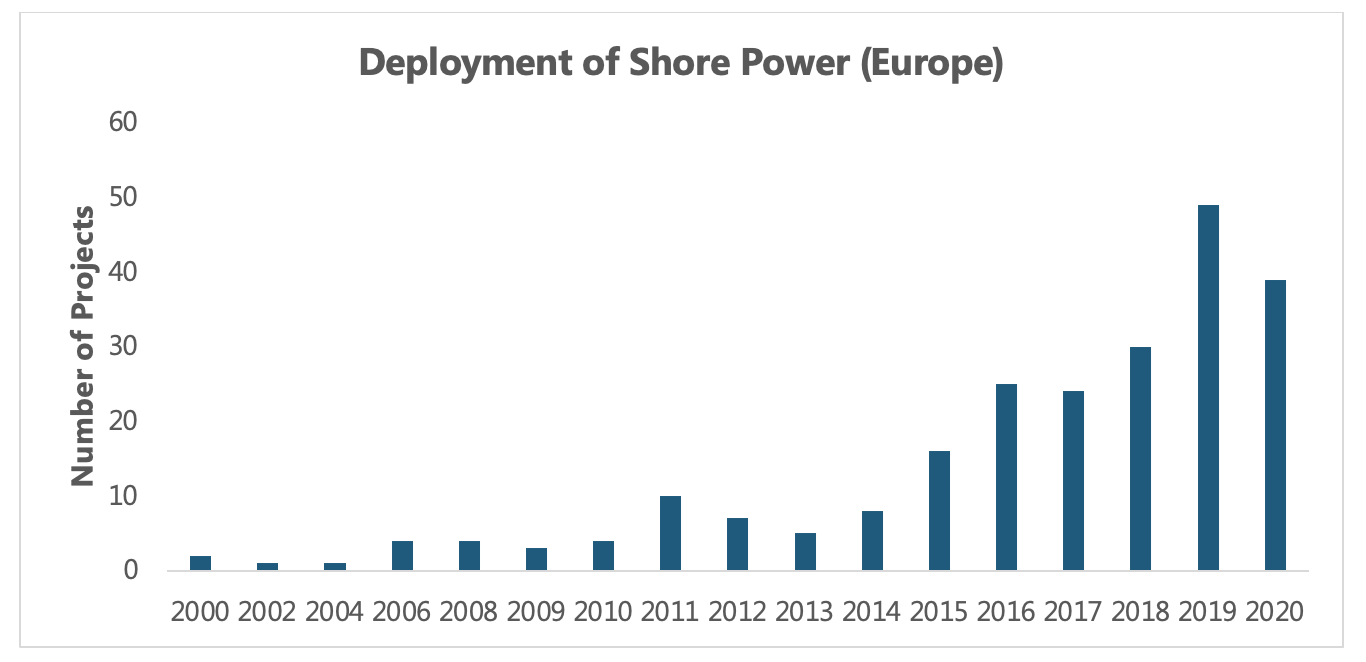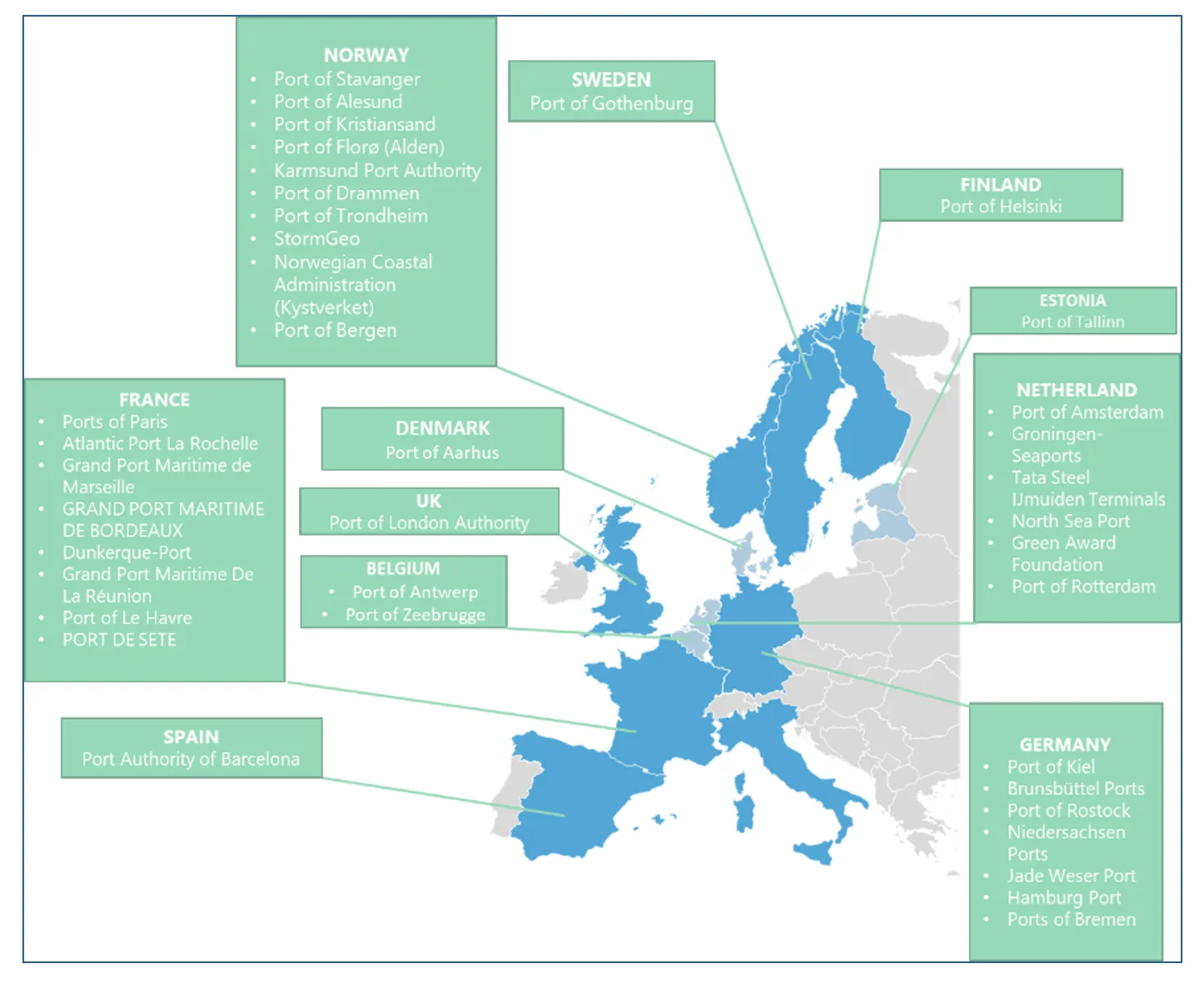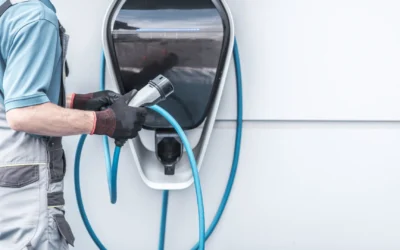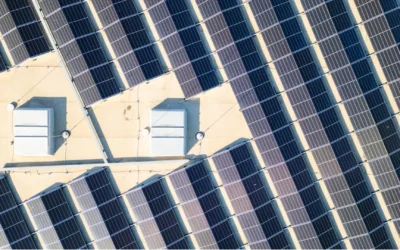- With 74% of imports and exports transported by the sea, the EU is clearly dependent on seaports.
- Onboard diesel generators not only result in harmful emissions but also causes noise and vibration in the vicinity of ports.
- Shore-side power supply provides both environmental and economic benefits to both port authorities and vessel owners.
Introduction
Vessels need electricity to operate their onboard services during their docking period and diesel generators provide the power to meet these requirements. The use of onboard diesel generators not only results in harmful greenhouse gas emissions, CO2, NOx content, but also cause noise and vibration in the vicinity of ports.
Shore power, also termed as “Cold ironing”, “Shore to Ship Technology”, “Alternative Marine Power (AMP)”, and “Onshore Power Supply (OPS)”, enables vessels to receive electric power from the local grid. Using this alternative, pollution is reduced since onboard diesel generator can be shut down.
Shore power technology is divided into two categories: shore-side power and onboard shore power.
The shore-side system comprises of:
- The main incoming substation, which receives electricity from the grid and distributes it to the entire system at the required voltage level.
- A frequency converter to meet the required frequency as most electricity grids operate at 50 Hz whereas most vessels operate at 60 Hz.
- The Cable Management System (CMS), that transfers electricity from the shore to the vessels.
The onboard shore power system comprises of:
- A transformer
- Low voltage switchgear
- A connection point to adjust the incoming voltage for the vessel operations.
Shore power plants are segmented into high voltage and low voltage based on their operating voltage. The IEC/IEEE 80005-1, IEC/IEEE 80005-2, and IEC/IEEE 80005-3 are the recognized technical standards which are widely followed to deploy shore power systems around the world.
Shore power is not a new concept. In the year 2000, the Port of Gothenburg in Sweden was the first to offer shore power to vessels. Since then, significant work has been undertaken to make the technology more accessible, scalable, and customizable. The graph below indicates the rapid growth in the deployment of shore power technology in ports across Europe in past years. The dip in the year 2020 is due to COVID which has impacted all maritime sectors.

Source: PTR
EU Directives, Trans-European Transport Network (TEN-T) Ports, IAPH and DNVGL Incentive Schemes
74% of EU’s imports and exports are carried by the sea, clearly indicating a huge dependency on seaports for trade, not only with the rest of the world, but within each country’s borders. In this spirit, European countries adopted EU Directive 2014/94/EU to support the development of the alternative fuel market for the transport sector and the deployment of the relevant infrastructure. Directive 2014/94/EU covers all forms of transport and is included as part of the Clean Mobility Package. Also, in 2014, 328 European ports joined the Trans-European Transport Network (TEN-T) network. TEN-T supports the application of innovation to all modes of transport and has an objective to reduce the environmental impact of transport. TEN-T includes the European network of inland waterways, maritime shipping routes and the infrastructure at ports.
Shore power is identified as one of the alternative fuel technologies in this directive and EU Directive 2014/94/EU requires the ports of Europe to install shore power facilities on priority basis by December 31, 2025.
To develop a sustainable ecosystem of environment friendly technologies, many ports in Europe offer incentives such as discounted service charges and other amenities, if vessels are within one of the measured indices. Although participation is voluntary, the goal of calculating these indices is to empower vessel owners and port operators to improve their operational efficiency while lowering their environmental impact:
- The Environmental Ship Index (ESI) set by International Association of Ports and Harbors (IAPH), is a formula that evaluates the amount of NOx and Sox that is emitted by a vessel and rewards vessels that use onshore power supply while at port. Based on their ESI, discounts offered by the ports vary according to the number of points earned by the vessels, which range from 10 to 100.
- The Environmental Port Index (EPI), developed by Det Norske Veritas (DNV), calculates a maximum tolerable environmental impact (NOx, CO2, Sox, and particle levels) while at port. The EPI allows vessel owners to enhance operational efficiency and vessels will also be able to take advantages of incentives offered by the EPI ports.
Incentives have encouraged the installation of both shore side and on-board shore power systems. To date, most major European ports have joined the ESI program, and over 4000 vessels around the globe have already deployed environment friendly technologies including shore power enabling themselves to receive discounts on port services.
The major European ports which are registered in ESI programme by IAPH are listed in the figure below:

Source: PTR
Data Source: https://www.environmentalshipindex.org/ports
Funding Agencies
There are several funding entities in Europe which provide monetary support for the deployment of shore power facilities at ports and some governments (Germany, France, Italy, Norway, Sweden, and Denmark) are also providing support for this technology. The most prominent funding agencies providing grants for this technology are as follow:
- The EU Green Deal program is a European Union project aimed at reducing emissions from aviation and maritime sector. Under this program, funds are generated for the deployment of environment friendly technologies. Ports deploying shore power are eligible to apply for grants from this program.
- EU Horizon 2020 is a research and innovation program initiated by the European Union. The fund provides support for preliminary studies and the deployment of new technologies including onshore power supply.
- Enova SF and NOx Fund are government owned funding entities dedicated to the deployment of the technologies like shore power and EV charging facilities at Norwegian ports. Enova SF has invested more the 700 million NOK for more than 100 projects at various Norwegian ports.
- TEN-T program provides funds for building shore power infrastructure at European Ports. The program has allocated more than 1.1 million Euros aside for the preliminary studies and deployment of shore power.
- Financial institutions, such as banks, offer loans to ports at low interest rates for the deployment of shore power technology. Shore power plants are a source of revenue for the ports and capital costs can be recovered within a reasonable time frame.
Technology Potential and Challenges:
Onshore power supply provides both environmental and economic benefits to both port authorities and vessel owners.
The major challenges faced in deployment of shore power solutions are:
- The total cost of shore power system includes both fixed and operational cost. Fixed cost includes the installation of electrical equipment and infrastructure both at shore-side and vessel side whereas operational cost constitutes running charges such as electricity price and taxes. The high cost of equipment such as frequency converter and electrical infrastructure makes it difficult for the port authorities to deploy this technology with out financial assistance from funding firms. High electricity tariff in Europe is another key impediment to the deployment of shore power technology.
- Shore power plants at ports are able to recover their capital cost once they begin selling shore power as a service to vessels. However, concerns arise from vessel owners when it comes to by vessel owners is achieved through savings from usage of diesel which is slow as compared to ROI achieved by ports.
These challenges can be addressed by government policies and strategies, such as providing funds and subsidizing the cost of electricity for the shore power facilities. The deployment of shore-side power at the major ports around the globe has made it one of the most viable alternative fuel technologies. The growing number of installations indicates that shore power is an efficient, sustainable, and profitable solution for the maritime sector to control harmful emissions at ports.
More about our Services
PTR Partners as Official Media Partner for Net Zero Europe – Solar & Energy Storage Summit 2025
PTR Partners as Official Media Partner for Net Zero Europe – Solar & Energy Storage Summit 2025 SUNNYVALE, USA, June 10, 2025 – Power Technology Research (PTR), a global authority in market intelligence for the energy and power sectors, is pleased to announce its...
Key Strategies for EV and EVCI Expansion
The authors, Mike Sheppard, CEO of PTR Inc. & Zainab Shah, Lead EVCI Analyst - Americas, highlight how the U.S. EV and charging infrastructure sectors are navigating a new era shaped by policy shifts and economic pressures. Following the rollback of key federal...
Harnessing the Sun: The Middle East’s Shift to Solar Power and Storage
In this article, PTR's CPO, Saqib Saeed, and Research Analyst, Siddiqa Batool, explain how the Middle East is accelerating its transition toward renewable energy—particularly solar power—supported by a growing focus on energy storage. Countries like Saudi Arabia, the...
Transforming Utilities: The Role Of Digitalization In Shaping The Future Of Energy
Authored by Saad Habib and Hassan Zaheer - In a world where electricity demand is rising—fueled by economic growth, electrification of transport and heating, and rapid renewable integration—utilities face mounting pressure to modernize. Traditional energy systems are...
Contact Sales:
Hassan Zaheer – Exec. Director Client Relations & Advisory
+49-89-12250950


